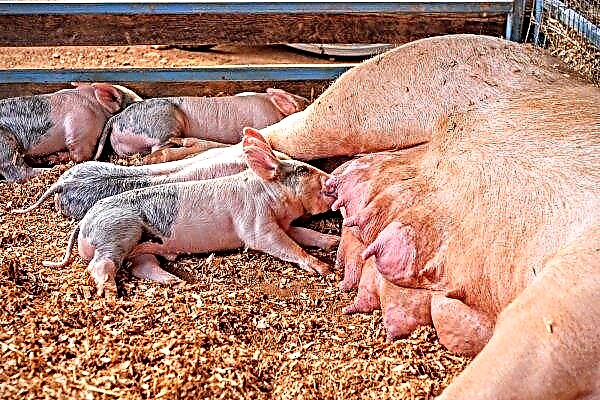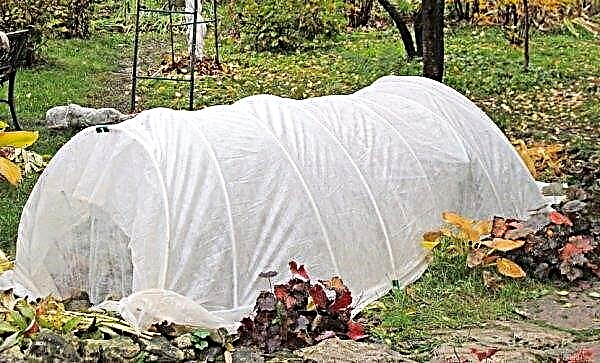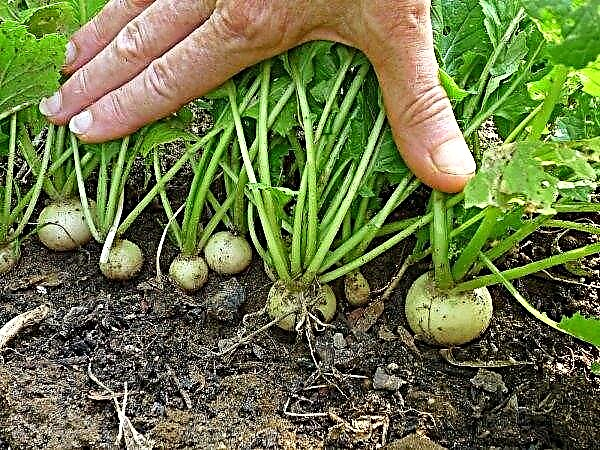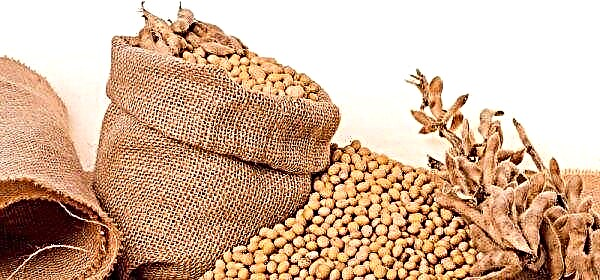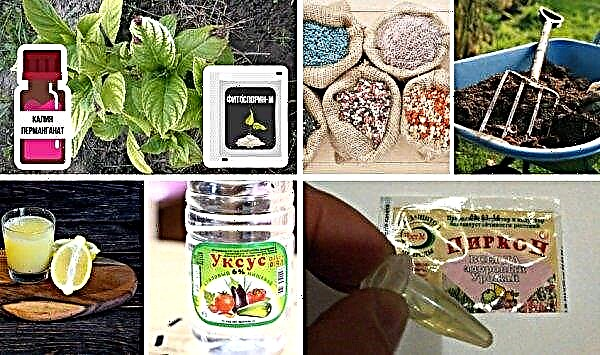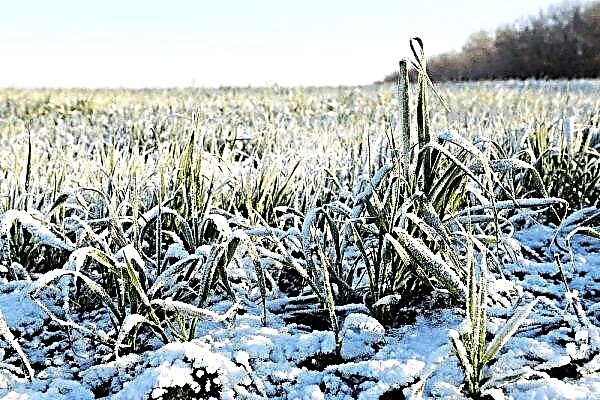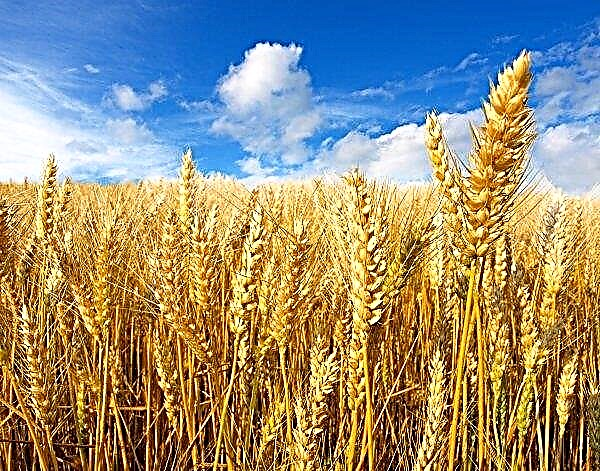White-flowered hemanthus is a common indoor plant. Its second, everyday, name “deer ear” (or “elephant tongue”) came from the characteristic shape of the leaves. Hemanthus care has certain features and nuances. Which ones? Read this article.
Botanical Description and Features
The plant belongs to the genus Amaryllis and is an evergreen perennial. The habitat of the species is the tropics of South Africa.
The main characteristics of the appearance are presented in the table:
| Root system | Bulb up to 12 cm |
| Stem | Thick, 15–25 cm |
| Leaf shape | Elongated, belt-shaped, up to 40 cm long |
| Leaf color | Dark green glossy |
| Flower shape | Dense inflorescence with bracts |
| Flower color | White |
Also among the features of white-flowered hemanthus should be mentioned:
- meatiness of the leaf with ciliary edge along the edge;
- the inflorescence consists of many white stamens with yellow anthers;
- the bright green color of the bulb at the beginning of the life of the flower;
- fruits - berries of orange-red shades.
Did you know? Scientists have brought some species of hemanthus into a separate species, Scadoxus. They can be indicated under both names.
Care and growing conditions at home
Hemanthus can be attributed to undemanding plants. However, to achieve flowering, special conditions are needed. The grower needs to bring the indoor environment as close as possible to the environment of the "habitat" of the plant in the homeland.
Choosing a location for a houseplant
Hemanthus does not like a full shadow or a bright sun with direct rays falling on the leaves. The most suitable place would be a windowsill in the east, northeast, or west. If only the south side is free, the flower should be pritenit. The room should be able to constantly ventilate, stagnant air is harmful to the bulb.
Optimum humidity and temperature
Humidity in the room practically does not affect the state of the hemanthus; it even maintains the dryness of winter heating. Spraying the plant is not required. Leaves can be wiped every few months to remove dust.
Despite the tropical origin, the optimum temperature for hemanthus is + 18– + 22 ° С. A short heat will not be a problem. Also in the summer, you can take the pot out into the shaded and sheltered from drafts place.
Important! When working with a plant, gloves are required — hemanthus is poisonous.
Soil and Choosing a Pot for Planting
Hemanthus does not need special soil. Ready-made mixtures for bulb plants can be used. The optimal soil composition is:
- two parts of turf;
- one part of peat, fine sand and sheet land.
Watering and fertilizer
For irrigation use settled soft water. It is not difficult to determine the need for watering: dried soil will show that the plant needs water. You can also focus on reducing the tone of the leaves. Overfilling can be dangerous, because water stagnation often causes bulb decay. Pour enough water into the pot, the excess of which must then be poured out of the pan. Leaf discharge for the winter period means that watering after flowering should be gradually reduced and then suspended for 6–8 weeks.
Pour enough water into the pot, the excess of which must then be poured out of the pan. Leaf discharge for the winter period means that watering after flowering should be gradually reduced and then suspended for 6–8 weeks.
Hemanthus needs a small top dressing, which is introduced during the period of active growth and flowering. Ready-made mixtures can be used for bulb plants once every 2-3 weeks. Fertilizer is not used from the moment the peduncle grows to its height of 10 cm and after flowering until the beginning of active spring growth.
Transplant and pruning
The annual transplant consists in transferring a young plant from a smaller pot to a larger one. Adult hemanthus are relocated as the bulbs grow approximately every 2–4 years. Children (small onions) must have their leaves and roots, then they are planted separately. The best work time is spring.
The transplant is carried out as accurately as possible, since the plant does not tolerate it well. The best way to reduce the risk of damage is by transshipment of a solid earthen coma, without root separation. The bulb should go into the ground at ¾ or at least half its height. Pruning is done only for dried leaves and faded peduncles.
Important! If in the spring it was not possible to transplant the plant, postpone the work until the end of summer, when it becomes cooler.
How white-flowered hemanthus propagates
There are three possible ways to get new plants. Most often, small bulbs that appear near the mother plant are used.
With the help of daughter bulbs
This method is the most simple and convenient. When the “third own leaf” appears on the “baby” and the time comes for transplanting the main plant, the onion is carefully separated and planted in a prepared pot. Young plants take root well, and can bloom in 3-4 years.
Leaf cuttings
This method will require much more effort than the first. It is necessary to separate one of the lower leaves of the adult hemanthus. A cut of the cut is sprinkled with coal dust (crushed wood or activated carbon) and left to dry for a day. Then the leaf is placed in a peat mixture with the addition of sand and moderately watered to root. The rooted cuttings are transplanted into their own pot. Such a plant blooms in 3-4 years.
Seeds
The seeds ripened on the flower must be sown immediately, since their germination capacity drops sharply with time. Seeds are placed on the surface of moist soil and create a semblance of greenhouse conditions for them. When the seedlings grow, they are seated in separate pots. Hemanthus grown in this way will bloom only after 5-6 years.
Dormancy and flowering features
Evergreen hemanthus is not characterized by white flowering. They recommend slightly reducing watering and not using fertilizers. The flowering period begins at the end of summer (sometimes from July) or with the beginning of autumn and lasts 2-3 months. At this time, the hemanthus can be sprayed with soft, warm water. Water every 3-6 days, then cut. Active pollen can leave an unpleasant odor. Hemanthus self-pollinates and forms an ovary of round berries up to 2 cm in diameter.
Did you know? Modern hybrids have a larger inflorescence. For example, Prince Albert is almost 2 times larger than the original form and has a bright orange color.
Growing difficulties
A flower grower may encounter several problems when growing a white-flowered hemanthus. The most common question is why the plant does not bloom, and how to deal with pests.
Disease
The plant does not bloom due to improper care. Such conditions may interfere with the appearance of flowers:
- overflow or dry soil, irrigation with hard water;
- low temperature with heavy watering;
- low light or draft;
- excess pot volume.
 Hemanthus may get sick gray rot which is extremely dangerous for the bulbs. The main reason for its appearance is excessive watering. If necrotic spots are detected, such a plant is destroyed. According to the experience of the owners, treatment with fungicides does not help.
Hemanthus may get sick gray rot which is extremely dangerous for the bulbs. The main reason for its appearance is excessive watering. If necrotic spots are detected, such a plant is destroyed. According to the experience of the owners, treatment with fungicides does not help.Anthracnose - fungal infection. Its sign will be dark spots on the sheet and dark streaks on the edges. The treatment consists in disinfection with Fundazolum, as well as in the removal of diseased leaves. At this time, reduce the frequency of watering and control the availability of good lighting.
Pests
Pests infect plant leaves and bulbs. Aphids and thrips rarely settle on hemanthus. Most often found:
By observing the irrigation and lighting regime, most problems can be avoided, and periodic thorough inspection will help to identify pests at an early stage.Hemanthus white-flowered is suitable for gardeners with any experience and will look great in various interiors. Simple care and spectacular flowering provided him with well-deserved popularity in indoor floriculture.

